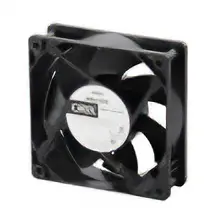How Do I Choose a Fan with an Alarm?


-

"By using a fan with an alarm, it is possible to detect a decrease in the fan's air blowing capacity due to abnormalities in the power supply, abnormalities in the air flow path, contamination of foreign objects, fan lifespan, etc." So that’s how it is…
-

What is it, Vex? You're looking at the general catalog! Are you making a motor selection?
-

No. A customer wants to use cooling fans with an alarm, and they asked me which type will be the best. I didn't know there were multiple product lines of alarms, so I was wondering which one I should introduce...
-

So, Vex, what do you think fans are often used for?
-

Well...they are mainly for cooling, and also for drying and ventilation?
-

That's right. Sometimes cooling and ventilation are done just in case, and sometimes cooling and ventilation are absolutely necessary, right? For example…
-

Cooling the control cabinets that generates a lot of heat! If the cooling stops, the heat generation could cause an abnormality in the equipment!
-

That's right! An alarm that alerts you of abnormalities is effective in preventing such situations. The advantage of a fan with an alarm is that the operation status can be monitored, minimizing damage to the equipment in case of an abnormality. The other reason is to reduce maintenance work and costs.
-

Reduction in maintenance and costs? It has those advantages, too?
-

For example, if a large factory uses fans for many equipment, it would take a lot of time and effort to confirm the status of all the fans by looking at them one by one, right? If you install a fan with an alarm, you can monitor all the fan statuses at once, reducing maintenance time.
-

I see! I definitely want to show that to the customer. There are three types of alarms: stall alarm, low-speed alarm, and pulse sensor type. What are their implications, and how should they be used?
-

Hey hey, I'm sure you can figure out the implications if you look them up. Do some research!
-

Well.. first, the stall alarm. This outputs an alarm when the fan stops due to some cause (like the lifetime or contamination by foreign particles). The low-speed alarm outputs an alarm when the fan deteriorates to approximately 70 % of its rated speed. And the pulse sensor type monitors the rotation speed by capturing the output signal to the host controller (2 pulses per revolution) when the fan rotates... How to use them...?
-

You just thought about the fan's applications, right? There's a hint! Depending on the equipment, there may be some cases when it's not a problem if the fan stops for a short period of time, but in other cases, there may be some cases when the cooling capacity is not sufficient for the heat generation, so the fan may stop or the reduction of air flow may be critical, right? In other words…
-

I see! You need to choose an alarm that matches the status of your equipment and the cooling conditions! If the wind power dropping is critical, it will be a low-speed alarm or a pulse sensor type.... If it's not a problem if the fan stops for a short period of time, a stall alarm will be sufficient... It seems that way!

-

A better description of the pulse sensor type is that it can monitor the state of rotation rather than informing you of deterioration of air flow.
If we don't know what kind of equipment the customer will be using fans with an alarm for, we can't recommend the appropriate one. Make sure to get a confirmation, Vex.
-

I got it.
-

By the way, have you compiled the data I asked for the other day?
-

Actually...not yet...

-

If the work doesn't go well, output an alarm. If you overheat, we'll be in trouble.
-

I'm already overheated...
